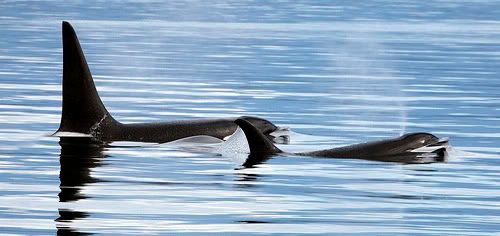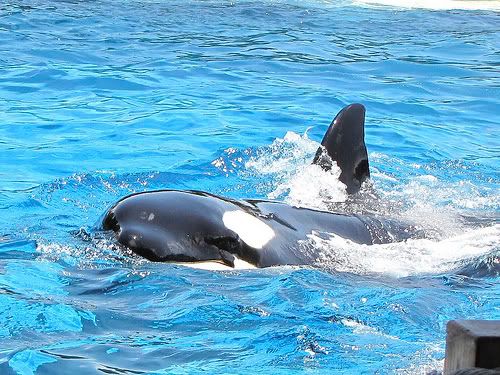 Earthquake in Chile
Earthquake in Chile
You probably just heard about the 8.8 magnitude earthquake in Maule, Chile and the threat to tsunamis to many coastal areas, including Hawaii and Southern California.
Here in the moutains, I am gazing out at fast falling snow with a roaring fire behind me but many areas of the nation have lost power and the ability to function because of a failing infrastructure to handle the unexpected snow loads.
It is too early to know much about the situation. People often spout a lot of bravado when it comes to disasters because they were narrowly missed or have experienced minor incidents.
In Southern California the mudslides and other dangers have consistently had people evacuated but people get complacent and habituated to false ideas of safety when multiple evacuations happen and nothing disastrous does.
It just takes once for something to happen and for people and animals to lose their lives.
When people refuse to evacuate it puts additional demands on rescue personnel because those who stay are so naive or too selfish to not evacuate.
What they forget it that it puts rescue personnel in danger while they attempt to rescue or move those at risk and pulls their valuable services away from other tasks–simply because some people believe they were going to be the exception.
This takes me back to my days of work in animal disaster preparedness and I, once again, urge you to take actions to prepare for the unexpected.
I’ve been distributing an ebook version of some of my work that discusses what actions to take and how to prepare to subscribers on this website. Take a minute to sign up to get the download information. You can grab Animal Disaster Preparedness for Pet Owners & Pet Professionals here.
Sea World’s Tilikum & the Dawn Brancheau Tragedy
I wrote a couple of posts related to Tilikum the orca (aka killer whale) and the death of Dawn Brancheau on my media and journalist blog but have been listening to people discuss this issue all around town and online.
Today people tend to throw out their opinions and get pretty emotional over issues for which they really have no knowledge and that causes a lot of problems.
Be Free? Have you forgotten Keiko?
In this situation, a lot of people suddenly want to “set Tilikum free” or to jump on the “all captive wildlife should be free.”
This is an ethical and property debate that I’ve seen before and will see again and again.
Most of us care about the well being of all creatures but when public pressure comes to a boil it isn’t always what is best for the animal.
Take Keiko the killer whale featured in the movie, Free Willy.
The whole emotional wave made me cringe and the public got what they wanted, and well, Keiko is dead and died within a short time of release.
This really made me sad because I knew the release was a death sentence but nobody wanted to hear that.
People didn’t question what was the best for the animal, who was funding the project, and very little news of his life continued after his release.
His death was tragic. What good did it do in the long run?
Tell me, seriously, I want to know what that death sentence for that killer whale accomplished.
The public bought into an idea that had nothing to do with reality. I wrote about this killer whale’s release back into the wild and this is a small excerpt of my commentary;
Anyone truly involved with animal rehabilitation could explain that habituated animals do not make good candidates for release back into the wild…
Just because you are biologically related and have heritage that links you back to a specific culture does not mean that you will integrate back into that environment after you have lived another way.
It is more complicated than that but I got my certification in captive breeding and conservation of endangered species and know a little bit about how serious rehabilitation works.
Are you buying into the myth or reality?
The other thing I want to bring up is this misconception about who and what animals are.
I hate the edu-trainment trend because it does not give people a reasonable base of information to operate from.
In the media you have television personalities that show invasive behavior inside animal habitats and the man-handling of wildlife.
It makes me cringe and has done so since the first wave hit in the late 1990s on the popular animal network, Animal Planet.
Today, they are not the only channel spreading this crap.
Nat Geo, once a respected source of info, has gone pop culture.
They have a personality in the pet realm who is using archaic and harsh techniques that people adopt and think are standard when they are not.
These types of examples perpetuate bad illustrations of how to interact with animals.
People want a connection to nature and animals but the examples they are given are misrepresented AND, even worse, they try and imitate what they see.
Sorry to say that those early Disney television shows and Sea World interactive shows contribute to that problem.
As an animal professional, I am saddened but not shocked by the fact that an orca trainer was killed.
In fact, I am more shocked that so few deaths have occurred based on the high number of interactions that trainers have with these very large predators.
So few incidents are probably more indicative of the fact that the trainers are not in the water with them all the time.
Humans and whales live in two different environments and so the risk is mitigated some what.
People forget that orcas are predators.
That means they kill things to eat them.
Sometimes they use strategy to kill them.
Once in a while they kill things and leave them to rot.
It doesn’t matter if you like them, love them, have worked with them for years.
They are ultimately predators–and very large, strong, potential lethal ones at that.
Now, every year countless people climb into zoo exhibits or get maimed or munched by the wildlife they wanted to get close to for a personal close encounter.
Are they lunatics, simply stupid, or do they really have such a disconnect from the wild creatures they see that they think these wild creatures are benevolent?
I think it is a mix of all of the above.
Then there those who want to believe all those crap emails that get circulated.
How about the polar bear and the dogs. Did anyone notice the fear tucked tail of the one dog “embraced” by the bear?
Guess what, you don’t see the ones that got eaten.
And people only see what they want to see instead of looking closer.
There are a bunch of them and people want to believe in the peaceable kingdom.
I’ve got news, we don’t live in it.
Bottom line is that there are predators and prey.
These creatures do what they do because they are animals and so operate as animals. They don’t care what humans want to think and don’t operate according to human rules.
That applies even if they are trained.
They aren’t tame, they are trained.
There is a difference.
From the Comments
Kat wrote in a great comment and rather than address it there, I thought it should be featured in a post:
I feel like the only non-industry person taking the orca’s side (although I greatly sympathize with the trainer and her family). But…aren’t these water park “entertainment” animals overworked? I would imagine they are intelligent enough to experience mental stress, just like an overworked human. Is my thinking out of line here?
Thanks Kat.
Your human viewpoint is just that, human. I don’t believe you, like most people, have personal experience with wild animals and so have formed your opinions in a variety of ways that are not always an accurate assessment.
Also, I don’t think you are alone in being on Tilikum’s side but there are a group of irresponsible people in the media spouting their opinions without a lot of research or facts–and they tend to be the most vocal.
As for overworked, I’d have to disagree and let me give you a bit of background as to why.
Back when I started in the industry, the rule was that animals had to be left “as natural as possible.”
This pissed me off coming from the movie and television training of wild animals.
The animals I knew loved to work and had a more complex and interesting life than any captive held zoo animal.
Oceanariums were still pretty new but were working on progressive animal training methods that have now evolved into the systems you see around the globe today.
However, at that time I was always getting yelled out or was considered a rebel (big surprise there) because I believed an animal’s life was enriched by training and that stress was reduced through that cooperative behavior.
In captive environments today, most aquatic show animals only work when they voluntarily comply.
Also, because there are a number of animals within any collection, they are rotated through the queue.
If anything, the real task of animal trainers is to keep their charges interested and mentally stimulated to prevent aberrant behaviors.
That said, there are number of factors that come into play when you see incidents.
Marine mammals are complex creatures that also have normal urges and no mental (or moral) restraints about acting on them.
These can include aggressive urges, sexual urges, competitive urges, etc.
Sometimes interspecific conflicts can catalyze undesired behavior.
Frustration can escalate into aggression and even mistakes by the trainer might catalyze an incident.
Also, despite what some trainers want to believe, animals do develop preferences for certain trainers and even jealousy can come into play and create situations.
Or, as was the case in the marine mammal incident I experienced while in the water, they see you as a tool to manipulate the behavior of the other trainer to get what they want.
Marine mammals understand the training nuances and so you have to be on the top of your game to keep things flowing and safe.
They will manipulate when they can.
So, I hope that gives you a better idea of some of the issues faced with captive whales.
And no, I don’t think they are overworked.
If anything, I think captive management is constantly striving to keep them healthy, not only physically but also mentally.
Any animal, wild or domestic, is better behaved and better balanced when tired and when kept mentally enriched.
So, rather than over being overworked, it is the lack of activity, lack of social interactions, and the lack of complex training programs could result in animal behavior problems.
Okay, that is it for today.
Here are some other links of interest:
If you did not catch the Sea World press conference, I’ve attached it below.
Be forewarned, Sea World has never been forthcoming and has always been a tight lipped and closed community–even to others in the industry.



